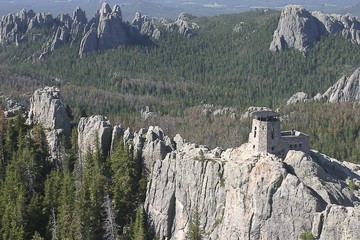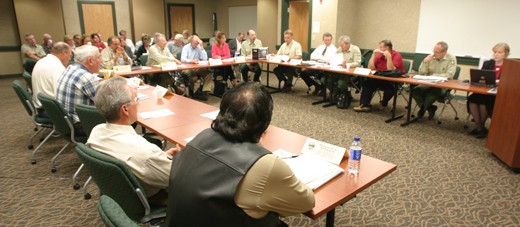John Rupe and I spent a day last week in Rapid City, South Dakota for a public meeting on the new planning rule, and also for a meeting of the Black Hills National Forest Advisory Board.
It was an interesting experience for me to start with the Science Forum, the National Roundtable in DC, then to Denver, then to Cheyenne for a meeting with government officials, then to public meetings there and in Rapid City. By listening to the similarities and differences expressed in the different kinds of places, I think I am starting to understand better the concerns which have led to place-based legislation. More on that later.
We heard the story from our Regional Forester about the White Mountain Forest having had an advisory committee until they were dispensed with by Jimmy Carter..whereupon they continued to meet and the forest supervisor continued to meet with them.
Checking for other forest advisory committees, I found this link to the 1977 Bend Bulletin describing the disbanding of the Advisory Boards. Maybe there is some more history as to why they were disbanded. It appears the forest supervisors and the public found them useful.. it’s a bit of a mystery (perhaps our more historically-oriented readers could help here.)
But one thing we did find out. There were a wide variety of interests at our planning rule roundtable in South Dakota, but there was general agreement that the Black Hills Advisory Board was useful. Here’s the webpage for the Advisory Board. The Board is not just about forest planning, though, it addresses the myriad of micro to megascale issues related to the forest.
One thought was, if you had advisory boards, that some forests have grown too large (through reorganizations) to be addressed in a meaningful way, and then you might need more than one advisory board per administrative unit.
What do you think? Should advisory committees for each forest be required or encouraged in the new rule?
P.S. There are many amazing photos of the Black Hills National Forest, as well as documents, audio and video, published here.

